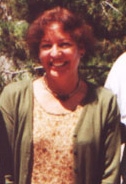
School:
Grade Level:
Teaching Position:
Supervisor:
Department:
Research Project Year:
Research Project Title:
Research Project Description:
An average galaxy is thought to contain a black hole at the center, otherwise known as a dead quasar. When a dead quasar pulls in a local star, it gives off a flare of light as it is torn apart. Flares occur once in 10,000 years, lasting for over a year. Automated monitoring of galaxies over time and spotting flares will reveal the location of now hidden black holes. Currently the UCSB telescope is used to take non-automated pictures of potential galaxies. First we scan the Harvard University databank to locate potential sources. Then we determine the best date and time for observation, using declination and right ascension values of the celestial coordinate system. We print out a specific star finder chart that is used to guide the telescope. Observations and photographs are made on clear local nights. Data is saved on a remote computer for later photometry analysis of images. Image subtraction is used to reveal the presence of flares.
Curriculum Project Year:
Curriculum Project Title:
Curriculum Project Attachments:
| Attachment | Size |
|---|---|
| 2.54 MB |
